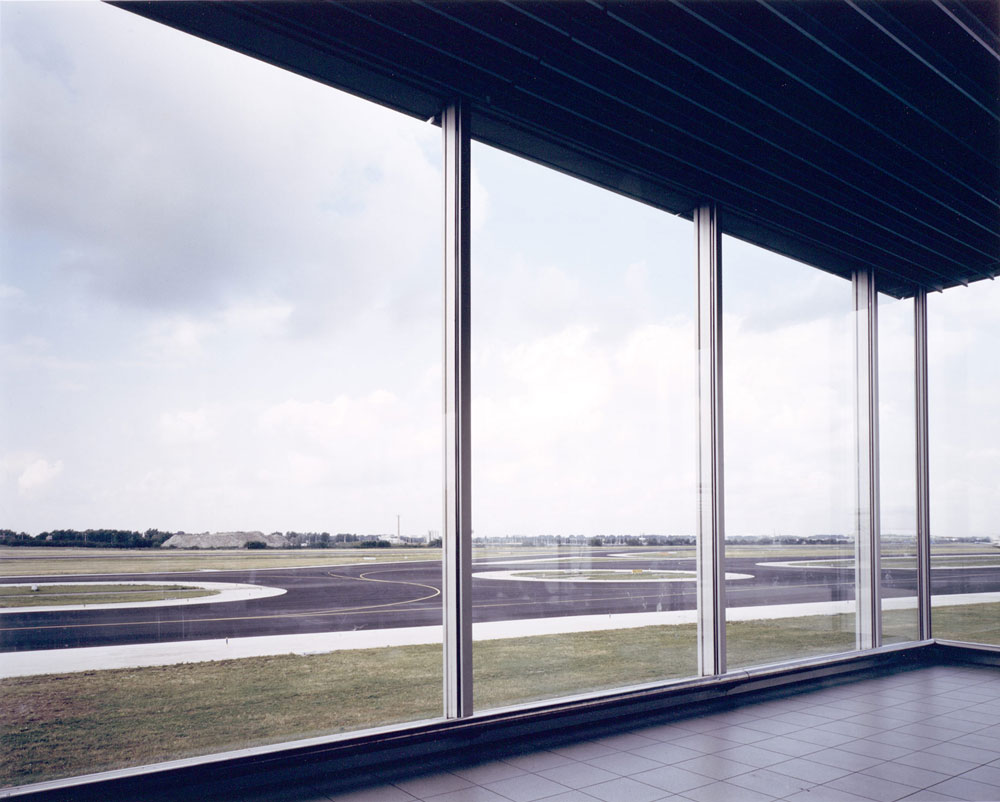Andreas Gursky | Hayward Gallery
An early high point in Andreas Gursky’s wonderful show, currently on at the Hayward Gallery, is a photo called ‘Schiphol’.
This early-ish (1994) work, looking out onto the runways of the titular airport, was taken at a time of transition for the artist. Gursky was increasingly turning to digital photography, and to the “aggregate states” for which he’s most famous today: complex, heavily retouched depictions of late capitalist workplaces, landscapes and cityscapes. These huge photos, absorbing as a Where’s Wally picture, are well represented at the Hayward show. As are his earlier, smaller, quieter, works: a little cluster of cyclists with their backs turned, plane-spotting at Düsseldorf airport (‘Sunday Walkers’, 1985), or a square of bobbly grey carpet at a local art gallery (‘Untitled’, 1993).

This picture of a terminal, and a runway, seemed to me to be a turning point between the two styles. There’s the thought-through detachment of the “aggregate states”, and their de-individualisation - while Schiphol is a very busy airport, it doesn’t have any people or planes in this picture. But there’s also that warmth and curiosity, so present in the early works, that got lost later.
‘Schiphol’ maintains the non-judgmental eye Gursky previously cast on the shabbily-clad, keen planespotters, and withdrew from his spectacular later photos of sweatshops (‘Nha Trang’, 2004), superstores (‘99 Cent’, 1999) and an Amazon warehouse (2016). Later, Gursky also moved into more on-the-nose political statements, critical of the man-made, the globalised. Contemptuous of consumerism.
But, here, there’s an easy, just-right quality about this quiet airport scene, even though it represents the same capitalist system, the global movement of people and cargo.
The later work has an icy perfection: the reflective ceiling of that 99 cent store is carefully retouched, while whole sections of the riverbank of ‘Rhine II’ (2015) are ironed out and reworked. But this airport terminal is a little dirty, with some dots of lint on the gridded tiles. There’s a slightly stained - maybe rusty - sideboard. And the joins of the ceiling are not quite meeting. Which somehow makes the man-made achievement more impressive. Look at the elegant curves and meanders of the runway approach, the solid planes of the glass, the satisfyingly regular grid of the tiles.
‘Schiphol’’s sinuous runway approach has a darker counterpart, later in the show. ‘Bahrain I’ (2005) is a totally horrifying aerial photograph of a desert Formula 1 track. These ribbons of road are undulating through a sandy hellscape. The black of the track, and sun-blasted white of the sand, is interrupted only by little bright-red roadside Vodafone logos. In the background, there are two helipads. The pitiless light that shines on the track, an absurd man-made imposition on a hostile landscape, is hazy with sand. It represents a global, money-driven, glitzy sporting roadshow. Just-right has turned to just wrong.
But, somehow, the simple pleasure taken by the photographer in the earlier photograph seems like a more radical political stance.
Andreas Gursky is at Hayward Gallery (London). 25 January - 22 April 2018.